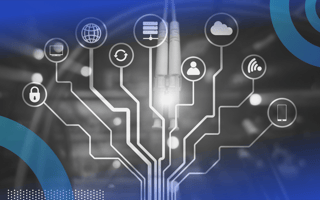Properly aligned IT infrastructure is key to scalability throughout any business and is essential for daily business operations.
What is the role of IT infrastructure?
- IT infrastructure exists to ensure that every employee has the ability to fulfill their responsibilities and maintain a steady workflow.
IT infrastructure is essentially the nerve center that powers business throughout the entire organization. It is essentially the devices, software and components put into place that ensures business continuity on a day-to-day basis while providing organizations with a solid foundation to grow and scale with.
Without a well structured IT infrastructure, employees would not have a network to connect to, there would be no standardized operating systems or devices in use, software used would be varied by the individual, very few security measures would be implemented and there would be no central database for employees to access. Perhaps most importantly, no company data would be protected or backed up, opening up the potential for catastrophic losses. In more recent years, businesses have also moved to implementing SaaS (Software as a Service) products hosted in the cloud, such as those created by Amazon, Google and Microsoft.
What are examples of IT infrastructure?
- The primary components of any organization’s IT infrastructure include hardware, software and networking components.
Hardware refers to the data centers, personal computers, routers, switches and any additional equipment utilized to power and connect devices throughout the IT environment. Any equipment that plays a role in supporting this equipment, such as power supplies and cooling devices, are also considered IT infrastructure. Software refers to the servers, operating systems, password management systems, content management systems, cloud environments and any other forms of distributed software utilized throughout an organization. Networking components consist of routers, switches, cables, firewalls, network security software, internet connectivity software and any other piece of hardware or software that facilitates communication between internal and external systems.
What is the most important part of an IT infrastructure?
- Broadly speaking, networking is the most vital component of IT infrastructure.
Networking is essential to communication at any business. While hardware and software are also essential for conducting business, employees are still able to function without a standardized approach to devices or operating systems, albeit with significantly greater difficulty. Networking creates a system in which every employee must be able to connect to and be provided with ways of accessing data, allowing digital security to be maintained while working and communicating with the internet and other external sources.
While the mass shift to remote work has led to less reliance on networking for internet connectivity within an office, connectivity must still be established using some form of networking infrastructure and it is still essential to be able to access data securely. Additionally, many roles are not capable of working in a remote capacity and even with remote work, networking connectivity is crucial to preserving the integrity and confidentiality of business data.





